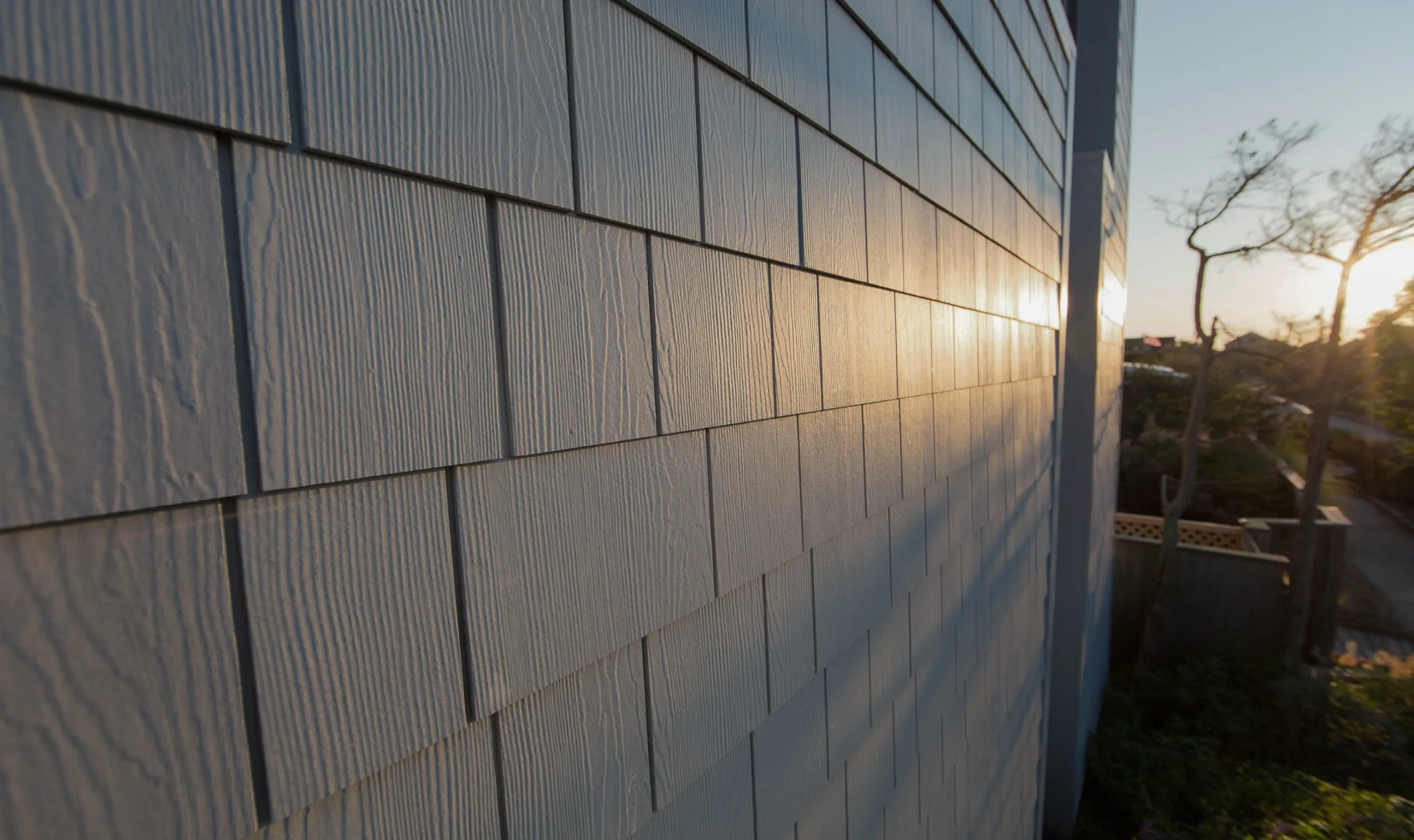The popularity of vinyl siding as a cost-effective exterior wall covering has continued to grow in recent years. While fiber cement siding has been around for many years, its popularity has increased in recent years due to its durability, fire resistant qualities that lower insurance premiums, and the fact that it can be painted any color. While both types of siding have their own advantages and disadvantages, James Hardie Fiber Cement is typically considered to be more durable and has qualities that preserve the color of your new siding over time. Vinyl siding however
Hardie Board siding vs Vinyl, what are the Differences?
When making the decision to re-side your home, you may be wondering if you should choose fiber cement siding or vinyl siding. If you are, you are not alone. This is a common question that many homeowners face. While both types of siding have their own advantages and disadvantages, there are some key differences that you should be aware of before making your final decision.
James Hardie Fiber Cement Benefits
Hardie fiber cement siding is made of Portland cement, sand, water, and cellulose fibers making it all natural, environmentally friendly, and extremely durable.
The benefits of James Hardie Fiber Cement are that the boards are 5x thicker than most vinyl siding planks. Hardie planks have a harder surface and have the aesthetic appeal of wood siding.
Fiber cement also resists damage from wind, rain, cold temperatures, and hail damage. Hardie Board’s thick layer absorbs contact with any object and is impervious to holes and dents.
The boards are also non-combustible, making them an ideal choice for homes located in areas that are prone to wildfires. Home Insurance companies see this as a fantastic addition to any home and usually provide a discount on home insurance premiums. In addition, fiber cement is termite resistant and does not rot or decay over time and comes with James Hardie industry-leading warranties.
Another key advantage of fiber cement is that it does not require painting as often as vinyl siding because of their own patented Color Plus technology. If you ever find yourself not happy with the color of your James Hardie fiber cement, it can be painted. The process is relatively simple and does not require any special equipment or skills.
Fiber Cement Siding is also extremely eco-friendly and is made of only sustainable materials and does not require burning of fossil fuels to produce.
Disadvantages Of Fiber Cement Siding
The only drawback of fiber cement siding is the initial price. This type of siding comes at a premium cost but keep in mind that this product is a premium long lasting, durable solution to the most beat on aspect of your home. While the initial price of fiber cement may be higher than other sidings on the market, it is important to keep in mind that fiber cement is a premium product that will last much longer than other sidings.
Advantages of Vinyl Siding
One of the main advantages of vinyl siding is that it is less expensive than fiber cement siding. This is because vinyl siding is easier to install, and the material does not cost as much to produce. Vinyl siding is easier to install, which can save you money on installation costs.
Many homeowners choose vinyl siding for it’s availability in a variety of colors and styles, so you can find a style that matches your home’s aesthetic.
Vinyl siding is also limited maintenance for the most part, but it will need to be repainted after 10 years or so and will require a yearly cleaning with a pressure washer to keep it pristine and looking its best. We created an article on how to clean vinyl siding.
Depending on the manufacturer, R-value vinyl siding can be very energy efficient. This is only if the vinyl siding has insulation added. Just like vinyl doors and windows it can be an excellent choice if you are looking to save on energy bills.
Disadvantages of Vinyl Siding
In addition to its many benefits, vinyl siding also has several disadvantages. One of the main disadvantages. While vinyl siding is easy to install compared to some other materials, it still takes a professional. Vinyl siding is not fool-proof and should be done by only a professional with many years of experience in installation. If installed incorrectly, your vinyl siding may expand, crack or warp to the point where it will need to be replaced before leakage happens.
Although it does take a while for vinyl siding to fade its color, repainting your vinyl siding may not be the best decision. There is a possibility that the paint will peel and crack and will look very unattractive. Most vinyl siding manufacturers will say that their vinyl siding will last for 20-30 years but if you live in an area where the sun is present for most of the year, your siding will really show its age in as little as 10 years.
Another issue that vinyl siding encounters is water damage. Usually, vinyl siding is nailed into a styrene insulation board and may trap water vapor within the siding that could cause problems over time. This is because there is usually a sealant over the boards to prevent water from getting in, but the issue arises when someone nails through the sealant making it possible for water vapor to escape through. Vinyl, unlike other materials, does not breathe as well and traps a lot of water vapor from within.
Vinyl siding is also not environmentally friendly. The process of making vinyl siding is very harmful to the environment. Burning fossil fuels to produce the vinyl siding releases harmful chemicals into the air. The process of recycling vinyl siding is also exceedingly difficult, so most vinyl siding ends up in landfills where it takes up space and pollutes the environment. Recycling vinyl siding is a challenging and time-consuming process. The main issue is that most vinyl siding is made from plastic which is difficult to break down. The plastic in vinyl siding can also cause environmental problems.
Vinyl vs. Hardie Siding. The Verdict.
The benefits of Hardie siding over vinyl siding are that it is more durable and lasts longer. Hardie siding is made from a harder, more resilient material than vinyl siding, which makes it more resistant to weathering and damage. Hardie siding is also available in a wider variety of colors and styles than vinyl siding, so you can find a style that matches your home’s aesthetic. Additionally, Hardie siding is an eco-friendlier option because it does not require any special care and can last for many years. If you are looking to make a big investment in your home’s exterior, hardie siding is a smart choice.
DaBella is the leading manufacturer providing the highest quality installations with top manufacturer products provided by James Hardie. James Hardie innovation and constant testing of their materials has made them one of the most trusted brands when it comes to your home’s safety, security, and performance. If you’re interested in seeing the DaBella difference, contact us at 844-DaBella and we’d be happy to provide you with a free no-obligation quote for your next James Hardie Fiber cement replacement.

